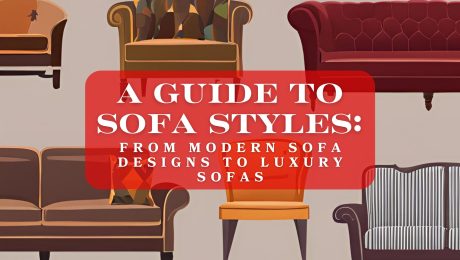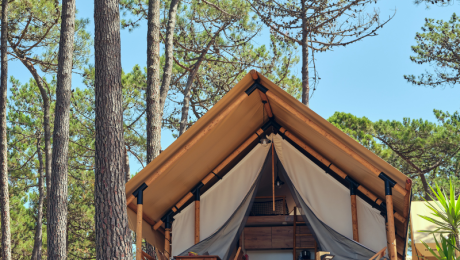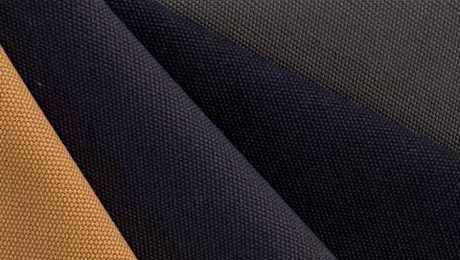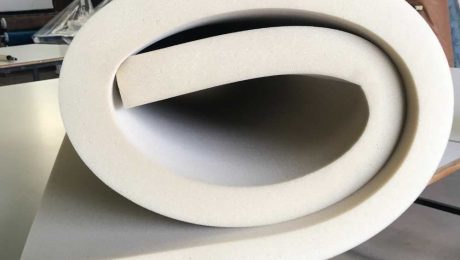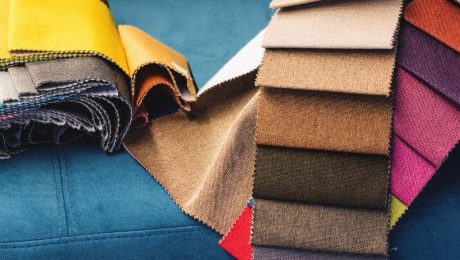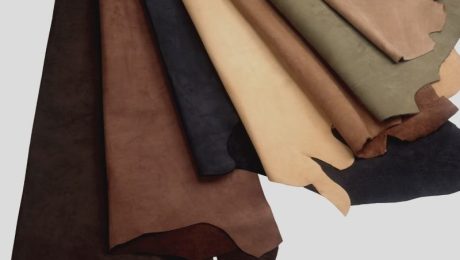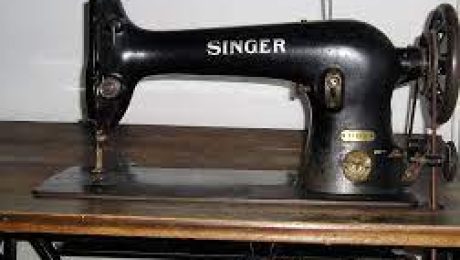PVC Tarpaulin: Weights, Uses, and What to Look For
PVC Tarpaulin is a fantastic product for your indoor and outdoor applications
If you are looking for a versatile product that is heavy-duty, then PVC Tarpaulin is the perfect choice. Available in a selection of thicknesses and vibrant covers, PVC Tarp can be used for a vast selection of applications, from truck curtains to tents, canopies, jumping castles, dam linings and even mattress covers. With the variety of uses comes a variety of options like what thickness to use and checking to see whether you’re purchasing the right quality for your project.
We’ve put together a guide to understanding what PVC Tarpaulin is, what it’s uses are and how to pick the right thickness and quality for your needs.
What is PVC Tarpaulin?
PVC Tarpaulin or Polyvinyl Chloride Tarpaulin, is a strong, flexible and waterproof fabric made by coating or laminating a woven polyester base cloth with layers of PVC vinyls. The combination gives the material both structural strength from the polyester and weather resistance from the PVC surface. Typically PVC Tarpaulin has three layers, a middle polyester base cloth that is layered on the top and bottom with a PVC or vinyl coating that repels water, UV rays and dirt. These layers are bonded together under high heat and pressure, resulting in a durable, flexible sheet that can be used for both temporary and permanent applications.

Key Features of Quality PVC Tarpaulin
-
Waterproof and rot-resistant
- Mold Resistant
-
UV stabilized to prevent fading and brittleness
-
Easy to clean and maintain
- Fire Retardant
-
Available in a wide selection of Colours and Thicknesses

PVC Tarpaulin Weights and Their Uses
The weight of PVC tarpaulin is measured in grams per square metre (gsm). The heavier the fabric, the thicker and more durable it is. Here’s a quick breakdown:
550gsm – Medium Duty
This is one of the most popular options as it is available in the widest range of colours and can be used for a wide variety of applications.
-
Use Case: Ideal for trailer covers, bakkie covers, outdoor blinds, protective equipment covers, pool covers, mattress covers, gym mats, waterproof bags, jumping castles and light weight tenting.
-
Features: Flexible, fairly lightweight, easy to handle and install. Suitable for indoor and outdoor applications. Typically comes in a 1.5 meter width and a 3 meter width.

700gsm – Heavy Duty
The 700gsm range is also available in a great colour range. Due to its weight, its uses are far more specilzed than the 550gsm.
-
Use Case: Truck tarps, industrial curtains, tent roofs, inflatable structures, high jump mats and tenting.
-
Features: Offers strong resistance to tearing and abrasion. Can withstand harsh weather and UV exposure for longer periods. Available in a 3 meter width.
800gsm – Extra Heavy Duty
Available in the smallest colour range, 800gsm is used only for specialized uses in specific industries like logistics and farming.
-
Use Case: Dam linings, silage covers, event tents, long-distance haulage covers (truck curtains), farm structures.
-
Features: Ultra-durable, high tensile strength. Built for permanent or semi-permanent installations and extreme conditions. Available in a 3 meter width.

Choosing the Right PVC for Your Project
When deciding on the type of PVC you need, make sure to keep the following in mind:
-
Environment: Outdoor projects exposed to sunlight and rain require a better quality PVC Tarpaulin that is coated in a highly resistant vinyl.
-
Durability Needs: For high-wear applications like truck curtains or dam linings, go for 700gsm or 800gsm.
-
Weight and Handling: For smaller or portable projects, 550gsm strikes the best balance between flexibility and strength.
-
Colour: Lighter colours reflect heat (useful for tents and covers), while darker colours offer better UV resistance and hide dirt.
- Fire Risks: Choose a PVC Tarpaulin with fire retardant properties for applications that may be near open flames.
Construction Methods: Welding vs Stitching
The two most popular ways to construct your desired products is by welding or stitching your PVC Tarpaulin. It’s important to note that the construction method will effect your final products longevity and waterproofing.
High-Frequency Welding
-
Best for: Sealing tarps that need to be waterproof, airtight, and long-lasting.
-
Benefits: Seamless joins, high strength, and weather-resistant. Ideal for professional products, especially if used outdoors.
Stitching
-
Best for: Light-duty or budget applications, or where flexibility and speed of production are important.
-
Downside: Needle holes can compromise waterproofing unless sealed; not as durable under tension.

Local vs Imported PVC: What’s the Difference?
Currently in South Africa you will find locally manufactured and imported PVC Tarpaulin. In our experience we have found that locally manufactured PVC Tarpaulin is a better choice for outdoor and heavy-duty applications as it withstands our climate better and therefore lasts longer.
Locally Manufactured PVC
Advantages:
- Faster turnaround times.
- Easier quality control and communication with suppliers.
- Often more affordable and supports local industry.
- Better suited to local climate conditions, especially high UV.
Imported PVC
Advantages:
- Sometimes offers access to unique finishes.
- May be cost-effective in large volumes.
Note: Imported PVC may not always meet South African climate requirements, especially under high UV exposure, unless specifically treated.
Caring for Your PVC Tarpaulin
Although PVC Tarpaulin is a low maintenance product, proper maintenance can extends its life considerably. With the proper care you’re high quality PVC Tarpaulin can last many years without losing flexibility or colour.
Here are some tips for maintaining yours:
-
Clean regularly with mild soap and water to prevent buildup of dirt and mold.
-
Avoid harsh solvents that can damage the coating.
-
Store rolled, not folded, to help prevent crease lines and cracking.
-
Inspect seams regularly if stitched, and re-seal if needed.
Get Your Projects Going
Now that you have a better idea of what PVC Tarpaulin is, how it’s made and the different weights it comes in, you’ll be better equipped to choose the right option for your needs. Whether you’re creating a dam liner or a small garden cover, using the right material for the job means better durability, lower maintenance, and long-term satisfaction. This won’t just help you when you’re purchasing PVC, but will also give you an idea of what to ask your local upholsterer or tent maker before going ahead with yout finished product.
✅ Still Need Help Choosing?
At Sonpra Superstore, we stock a wide variety of PVC tarpaulins in multiple weights and colours — only locally manufactured for our unique climate — and can guide you through welding options and fabrication techniques to suit your needs.
- Published in Blogs, Uncategorized
5 Compelling Reasons to Reupholster & Upcycle your Furniture

Over the last few years I’ve found myself upcycling old pieces of furniture that catch my eye. It started with reupholstering the first 2 seater sofa we ever purchased and ended in me digging in a corner at a thrift store for antiques that were begging for new life. I realised that upcycling old furniture and antique pieces, rather than buying new is highly rewarding. Not only do you preserve a piece of history, but there are loads of practical and environmental benefits too.
Here are five compelling reasons why you should upcycling and reupholster furniture and antique pieces.
1. Unique and Quality Pieces
I love that by upcycling old furniture you can create unique pieces. Unlike the mass produced furniture on the market, an antique and upcycled piece has a history and character and you can make it one-of-a-kind. It also adds something special to your home environment and reflects your personal style.
In addition, you’ll find that older furniture is often made with higher quality materials and craftsmanship compared to modern items that would cost the same. You’ll also find that often these pieces are made with solid wood and have intricate designs that aren’t commonly seen on the market. By investing in quality, you ensure that your furniture is beautiful, durable, and capable of lasting.
2. Supporting Local Artisans and Craftsmen
There are plenty of talented craftsmen and upholsterers in South Africa that will breathe new life into your old furniture. By giving them the opportunity to help you upcycle your furniture pieces you support your local economy and foster a community of skilled tradespeople and small business owners. Your local upholsterer and craftsmen will bring expertise and passion to their work that will be evident in the final product. It’s also a great way to help preserve traditional skills that would otherwise be lost in the age of mass production. If you’re looking to find an upholsterer in your area you can reach out to upholstery suppliers near you – we’re always happy to give referrals.

3. Cost-Effective
Reupholstering and upcycling furniture is often more cost-effective than buying new. Of course it does depend on the item that you are upcycling and the materials you decide to use. But if you choose to rather fix a set of furniture you bought 10 years ago, most of the time it will be more cost-effective and you’ll be sure of the quality. You’ll find that a lot of the time older pieces are more durable and higher quality than most modern furniture pieces. This means you won’t have to replace them as frequently, which means saving money now and in the long run.
4. Personal Satisfaction and Creativity
There is a unique sense of satisfaction from upcycling furniture or finding the perfect antique piece. The process allows you to express your creativity and breathe new life into items that might otherwise be discarded.
Whether you’re reupholstering granny’s favourite chair, refurbishing the headboard you bought years ago, or turning a thrifted sofa into a multicolour work of art, upcycling is both challenging and rewarding. It provides an opportunity to learn new skills, engage in sustainable practices, and create something uniquely tailored to your tastes. The result is a piece of furniture that tells a story and adds character to your home.
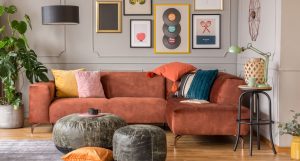
5. Environmental Benefits
The environmental impact of fast furniture production is significant. Like fast fashion, fast furniture prioritizes low-cost production and quick turnover of trendy items. This leads to substantial waste, with many pieces ending up in landfills within a few years.
When you choose to upcycle or buy antiques, you help reduce waste and the demand for new resources. Reupholstering or redesigning existing pieces means fewer trees are cut down, less energy is used in manufacturing, and less waste is produced. Additionally, transportation emissions are reduced since antiques often come from local sources rather than international factories.

We can curb fast furniture waste by reupholstering and upcycling
Why Reupholstering Is The Way To Go
Being in the upholstery supply industry has given us plenty of opportunities to witness upcycled projects come to life. We’ve had a front seat in seeing the joy of an old forgotten piece of furniture get new life. It’s what inspired us to upcycle our own furniture, and let me tell you, we were not disappointed.
It’s fantastic seeing how a little bit of material and a few upholstery accessories can transform your furniture. From reducing waste and supporting local artisans to investing in quality and enjoying the creative process, the advantages are clear. Each piece of upcycled or antique furniture has a unique story and offers a timeless addition to your home. So if you’re looking to replace your furniture, why not first consider reupholstering what you have. We promise you won’t regret it.
- Published in Blogs, Uncategorized
A Guide to Sofa Styles: From Modern Sofa Designs to Luxury Sofas
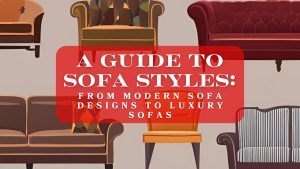
Your living room isn’t complete without the right sofa or lounge suite. Whether you are looking for modern sofa styles for a family or are looking for a luxury sofa for your classic décor, there are enough options out there. From classic sofa designs like the Chaise to a contemporary leather sofa like the Chesterfield, each style boasts unique characteristics, historical roots, and design sensibilities. We’ve put together a guide to seven of our favourite sofa styles, offering insights into their origins, defining features and the best upholstery materials to incorporate them into your home décor.
-
The Chesterfield Sofa
Named after the Earl of Chesterfield, this sofa became popular in 18th-Century England. With it’s deeply buttoned back and arms this sofa offer a unique elegant touch, while its rolled arms guarantee support and comfort.
- Style Suitability: Timeless elegance, perfect for traditional, Victorian, and even contemporary settings with a touch of classicism.
- Material Recommendations: Leather is the traditional choice, but velvet, linen, and even faux leather can add a modern twist.
- Pro Tip: Choose a light coloured material with soft textures to give it a softer look for a modern touch.
-
Sectional Sofa
The sectional sofa is one of the most popular modern sofa styles out there. The modular design consisting of multiple pieces can be arranged in different ways to fit your décor and room size. This is one of the most adaptable sofas out there and even works well in small living rooms.
- Style Suitability: Fits seamlessly into contemporary, modern, and even eclectic homes.
- Material Recommendations: Leather, microfiber, and durable fabrics like polyester blends are common choices.
- Pro Tip: Add soft puffy scatter cushions to give modern sectional sofas a homely and more comfortable look and feel.

-
English Roll Arm Sofa
First seen in 19th Century Britain, this traditional sofa has gently sloping arms that roll inwards towards the seat. These sofas are versatile and can be found in a variety of styles from antique to modern.
- Style Suitability: Adapt this luxury sofa to your style and make it suitable for traditional, transitional, and contemporary rooms with your choice of fabrics.
- Material Recommendations: Leather, linen, cotton and velvet are popular choices, allowing for various color palettes and textures.
- Pro Tip: Enhance the classic look of an English Roll Arm sofa by opting for elegant tapered legs in brass or wood. For a modern twist, consider a sleek metal frame and upholster in a contemporary fabric like velvet or linen.
-
Chaise Lounge
The Chaise Lounge is characterised by its elongated style and raised footrest. This is the ultimate classic luxury sofa style and adds something special to any décor. It dates back to ancient Egypt but it became most popular in Europe during the 18th Century.
- Style Suitability: Adds a touch of elegance and sophistication to any room, from bedrooms and living rooms to sunrooms and libraries.
- Material Recommendations: Velvet, silk, and linen offer sumptuous comfort and enhance the chaise lounge’s luxurious appeal.
- Pro Tip: There are a variety of styles of Chaise Lounge available, so be sure to choose something that will not just be comfortable but will suit your decor needs.

-
Futon
The modern version of the Futon is modelled after the traditional Japanese floor bed and became popular in the early 90’s and 2000’s. It easily converts from a sofa to a bed and is usually quite low to the ground and smaller than a conventional sofa. It’s the perfect solution for small spaces.
- Style Suitability: Great as a space saver in smaller rooms and apartments. Can seamlessly fit into minimalist, bohemian, and even traditional settings.
- Material Recommendations: Durable fabrics like cotton, linen, and denim are ideal for withstanding frequent use. You could also consider genuine leather or artificial leathers like vinyl for the outer parts.
- Pro Tip: Be sure to check your space when adding a Futon to ensure you can open it when needed. Add some soft scatter cushions and a throw blanket that can be used for décor and to sleep.
-
Camelback Sofa
With its distinctive arch in the centre of the backrest, the Camelback is strongly influenced by French Rococo design and was made popular during the 18th Century in England.
- Style Suitability: Adds a touch of elegance and sophistication to traditional, transitional, and even eclectic interiors.
- Material Recommendations: Velvet, silk, and linen are classic choices, while textured fabrics can add a modern edge.
- Pro Tip: Mix and match plain and printed material to add a touch of class or whimsy to your décor.

-
Recliner
Believe it or not, the modern recliner comes from a 19th Century design initially used for medical purposes. Today it is the most popular modern sofa on the market. With its adjustable back and footrest it offer the ultimate comfort and relaxation.
- Style Suitability: Fits perfectly into home theaters, family rooms, and any space where comfort is paramount.
- Material Recommendations: Leather, microfiber, and durable fabrics that can withstand wear and tear are recommended.
- Pro Tip: Recliners take a lot of wear and tear so it is best to consider leather or a very sturdy synthetic alternative. To add a little more style to your recliner pair with pretty scatter cushions and a throw blanket.
The Options of Sofa Styles are Endless
With so many options to choose from, it really comes down to what your needs are. The same can be said when you choose the material that your sofa of choice is upholstered in. You may be influenced by your living style, your family or the aesthetic you have in mind for your décor. But one thing you should always put first is comfort. So whether you’re leaning towards a more antique classic style or a modern sofa style, don’t be afraid to choose what suits you most.
If you’re looking to reupholster an existing sofa or add a touch of luxury to your new purchase, explore our wide selection of high-quality upholstery materials at Sonpra Superstore. We offer a diverse range of fabrics, genuine leather and vinyls to help you achieve the perfect look for your home.
- Published in Blogs
Here’s Why Ripstop Canvas is Perfect for Your Project
Ripstop Canvas: The Indispensable Fabric for Crafters, Adventurers, and Everyday Use
We love recommending quality fabrics that can withstand wear and tear. That’s why Ripstop Canvas is a constant favorite among our customers – and for good reason! Ripstop Canvas is unmatched when it comes to durability, UV strength and water resistance. Thin threads strategically woven into the material in a grid-like pattern create small squares. These squares act as barriers, preventing rips and tears from escalating and compromising the entire fabric. This unique construction makes Ripstop Canvas the ideal choice for a so many projects, from everyday bags and backpacks, tents, awnings, vehicle seat covers and outdoor covers.
Why You Should Choose Ripstop Canvas:
Unmatched Durability
As mentioned earlier, the weaving technique used to create Ripstop Canvas grants it exceptional resistance to rips and tears. Even if the fabric snags or gets punctured, the damage is confined within a single square, stopping the tear from spreading further. This characteristic makes it the perfect companion for heavy-duty use and outdoor adventures, where where you never know what you may encounter.

Use It for Almost Anything
Most commonly available in a 400gsm weight, it is incredibly versatile in application. It’s a great choice for cooler bags, rifle bags and specially crafted backpacks. The heavy duty nature of Ripstop Canvas makes this great motor vehicle applications such as seat covers, canopies, and game viewer roofs. It’s also the perfect choice for tents and outdoor covers since it won’t easily rip, tear or fail to the elements, even in the harsh African climate.
Water Repellent Properties
Many Ripstop Canvas fabrics come equipped with a water proof finish that effectively protects against wet conditions. This not only safeguards your belongings but also simplifies cleaning the fabric. This fabric can handle extended weather exposure if applied correctly, which is why so many tent manufacturers choose this product. If you find that your product may be aging or you find small holes forming in the stitching, consider adding a further water-proofing treatment to maximize protection. Check out our range of Canvas Revive for this.
A Spectrum of Versatility
Ripstop Canvas comes in a great array of earthy colours and weights, making it suitable for a multitude of projects. We offer you a great selection. It’s perfect whether you’re crafting stylish cooler bags for everyday use, creating sturdy outdoor covers for weekend adventures, or constructing durable tents and outdoor furniture for your backyard oasis. The possibilities are truly endless!
Effortless Care
Maintaining Ripstop Canvas is a breeze. For most Ripstop Canvas, a simple spot clean with a damp cloth is usually sufficient to remove dirt or minor blemishes. If you find yourself facing tougher grime and stains you can use our handy Canvas Cleaner that is specially formulated to clean and restore your canvas products.
Try Out Something Different
Over the years we have seen some amazing creations made from our Ripstop Canvas range, each more innovative and stylish than the next. There are endless possibilities with this fabric, all you need is a little imagination, creativity and our trusted canvas. The natural texture of the canvas adds a sophisticated touch to any project, while the vast array of colors allows you to personalize your creations and express your unique style.
Here’s a few ideas on what Ripstop Canvas can be used to make
Canvas Bags
- Cooler Bags: Pair our Ripstop Canvas with Aerothane Foil and you have the perfect cooler bag. It’s not just great looking, you can also use these cooler bags in any conditions as they are sturdy and great on the go. These canvas cooler bags have become very popular with hunting lodges and guided hunting companies. This is because Ripstop can take heavy weights and is ideal for storing meat.
- Rifle Bags: There are so many really cool rifle bag designs out there. From simple bags to bags that open up to become shooting mats that can be used to stabilise rifles on your bakkie hood. Again, Ripstop is a favourite as it is sturdy, can carry heavy weights and is easy to clean. It’s also really UV resistant so you don’t need to worry if you leave it out in the sun.
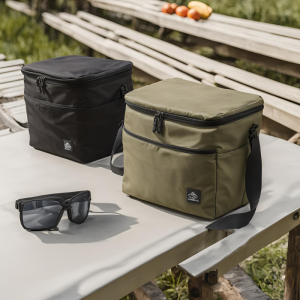
Ripstop Canvas for Your Vehicle
- Soft Bakkie Canopies: This is one that you have probably noticed while on the road. If you didn’t know, most of those canopies are made from Ripstop Canvas. It lasts so well in South African weather conditions that it’s the best choice for your bakkie.
- Motor Vehicle Seat Covers: Although Cotton Canvas is the most popular choice for motor vehicle seat covers right now, Ripstop Canvas is still king in most industries. It’s still a popular choice for making seat covers for game viewers, trucks, hunting seats, and even taxi’s. That’s because it’s sturdy, easy to clean and can withstand the weather.
Your Outdoor Companion
- Tents: Ripstop Canvas was originally made for the manufacture of safari tents. The fabric’s water-repellent properties and exceptional strength make it ideal for keeping you protected on your outdoor adventures.
- Awning Blinds: Some of the most beautiful awning curtains that we’ve seen have been made from Ripstop Canvas. It’s durable, yet still looks stylish, especially in the stunning earthy tones that it is available in.
At Sonpra Superstore, we’re passionate about providing high-quality fabrics that empower your creativity. Our extensive collection of Ripstop Canvas boasts a variety of weights and colours to suit any project. Want to check this product out for yourself? Send us an email at info@sonpra.co.za to find out about sample packs.
- Published in Blogs
100% Cotton Canvas: From Tents to Totes
Cotton canvas has been around for centuries and has been used for a variety of purposes, from making tents, sails, blinds and seat covers to creating unique tote bags and luggage. This versatile and durable material has stood the test of time. It continues to be a popular choice among designers and manufacturers.
A Short History
The history of cotton canvas dates back to ancient times, where people used it for practical purposes such as making tents and sails. Initially, canvas was made from hemp, but cotton became a popular choice in the 19th century due to its softness and durability. In South Africa, cotton farming became prominent during the 1690’s and there are still many cotton farms in existence today. In fact, our cotton canvas materials are manufactured right here in South Africa with locally grown cotton. Recently there has been a surge in products made with cotton canvas as they last longer than other materials, especially in our unique African climate.
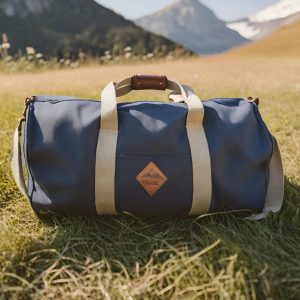
Why We Love Cotton Canvas
Its sturdy construction and ability to hold up against wear and tear make it an excellent choice for outdoor gear, car seat covers and accessories. But 100% cotton canvas is not just for practical use – it has also made a name for itself in the fashion industry, with many interior designers incorporating it into their collections for its unique texture and rustic appeal. In this article, we will explore the many uses and benefits of cotton canvas, from its humble beginnings as a utilitarian fabric to its current status as an eco-fashion staple.
Why you Should use Cotton Canvas for Your Project
Cotton canvas is a durable, sturdy, and heavyweight material that can withstand wear and tear better than most natural fabrics. Its plain weave texture makes it easy to work. You can customize 100% Cotton Canvas for almost anything from tents, motor vehicle seat covers to furniture, luggage and blinds. Over the years we have seen clients complete many beautiful, diverse and unique projects with our line of cotton canvases. Due to its breathability, durability & waterproofed surface, cotton canvas is the top choice with many upholsterers, tent makers and motor trimmers. There are also many leather craftsman that enjoy using a combination of cotton canvas and leather for their projects. Since both natural materials can withstand daily wear and tear it’s a great pairing.
Cotton canvas is very breathable unlike many synthetic canvases and allows air to circulate freely making it great for use in warm conditions. Additionally, our line of cotton canvas is water, sand and oil resistant. It has also been specially treated to withstand mildew and rot making it perfect for outdoor use. Although it’s not specifically UV treated, colourfast dyes are used on all cotton canvas materials to ensure that the colour does not easily fade even when placed in direct sunlight.
How to Care for your 100% Cotton Canvas Products
Proper care and maintenance are essential for prolonging the lifespan of cotton canvas products. Cotton canvas can be hand washed in warm water with mild detergents and can also be dry cleaned. If you choose to hand wash your material, you should ensure never to use any bleaches or harsh detergents. These can damage and degrade the cotton fibers and compromise the colour. Cotton canvas can also be warm ironed but should always be air dried.
It’s a Best Seller for a Reason
Cotton canvas is a versatile and durable material that is not just long lasting but sustainable as well. It’s natural fibers make it a great eco-friendly option that will prove harder wearing than most of its synthetic competitors. From its humble beginnings as a utilitarian fabric to its current status as an eco-fashion staple, cotton canvas has found its way into various industries. You can shop your 100% Cotton canvas at Sonpra Superstore now. Choose from our range of colours available now in store and online.
- Published in Blogs
A Guide to Choosing the Perfect Upholstery Foam in South Africa
Re-upholstering your loved furniture is a great way to breathe new life into your home. While choosing the right upholstery fabric is key, remember that choosing the right upholstery foam is just as crucial to create comfort and support that lasts.
In South Africa, polyurethane foam reigns supreme for its affordability and versatility. Here at Sonpra Superstore, we offer a curated selection of foams to perfectly match your project needs.
Finding Your Firmness Fix: Density Decoded
When speaking to customers, we use the term”density” to describe the firmness of the foam. The higher the density, the firmer the foam. Here’s a few popular choices that we keep in store:
- 16 Density: This softest option is ideal for delicate curves and backrests of dining chairs and sofas. Think luxurious sink-in comfort.
- 23HH Density: Our “high, high” density strikes the perfect balance between comfort and support. It’s a popular choice for sofa seats and well-used chairs.
- 28 Density: This firmest option stands up to daily wear and tear, making it ideal for high-traffic areas like sofa seating and chair cushions.
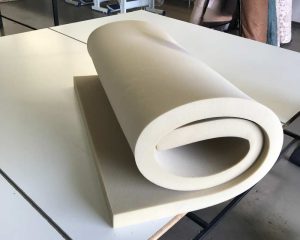
Measuring the Perfect Fit: Upholstery Foam Thickness
In addition to a variety of densities, we also keep a selection of thicknesses that accommodate your furniture’s unique contours:
- 25mm (1 inch): This thin option adds subtle padding to headrests and armrests.
- 50mm (2 inches): A versatile choice for chair backs and cushions that need some shaping.
- 75mm (3 inches): This thickness provides substantial comfort for sofa seats and deeper chair cushions.
- 100mm (4 inches) and above: Perfect for creating plush comfort on oversized furniture or adding extra support to sagging cushions.

Mix and Match: Crafting Your Custom Comfort
Remember, finding the perfect foam is all about personal preference. There’s a reason people test out sofas and chairs before they purchase, one person’s comfort is another persons backache. It’s a similar process when you decide on what foam to choose when you re-upholster you favourite piece of furniture. As a rule of thumb we usually advise the following:
- Softer on Back, Firmer on Bottom: Opt for a 16 Density back cushion and a 23HH Density seat cushion for ultimate comfort and support.
- Double Up for Double Delight: Feeling extra luxurious? Try layering a 16 Density foam over a 28 Density foam for a cloud-like sofa seat.
Don’t be afraid to experiment and keep in mind that the new foam won’t feel like the old, but that’s because it’s still new and will take a while to settle.
Your Upholsterer is Your Foam Fairy Godmother (or Godfather)
Don’t hesitate to consult your upholsterer! They possess the expertise to guide you through foam selection based on your furniture, desired comfort level, and budget.
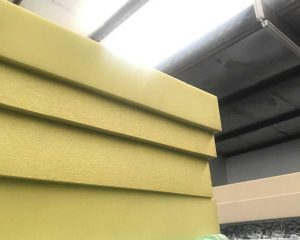
Bonus Tips for South African Re-upholstery Champions:
- Sun-Kissed Sofas: If your furniture lives outdoors, ensure that you are using the right material that is water resistant as moisture and high UV can damage your upholstery foam over time.
- Budgeting for Bliss: Polyurethane foam is generally the most affordable option, but remember, higher densities tend to cost more. Consider your needs and priorities when making your choice.
- All Foam is not Equal: There are a lot of different upholstery foams available in South Africa, make sure that you are getting the quality you are paying for. Some foams are manufactured with better ingredients and therefore will last you much longer than others. Ask you upholsterer or local upholstery store for advice if you’re unsure.
No Measuring Mishaps: We Cut Your Upholstery Foam to Perfection
Don’t let measuring and cutting become a roadblock to your re-upholstery magic! We take the guesswork out of foam fitting with our precise foam cutting service. Simply let us know the dimensions you need, and we’ll slice and dice your chosen foam to size, ensuring a perfect fit for your furniture.
Whether you need intricate curves for armrests or precise squares for chair cushions, our skilled team handles it all with care.
Remember, accurate foam cutting saves you time, effort, and potential material waste. So, let us take the hassle out of the equation and focus on what matters most – creating furniture you’ll love for years to come!
With this guidance you’ll be one step closer to choosing the best upholstery foam for your most loved furniture!
- Published in Blogs
How to Choose Upholstery Fabric for your Home
Looking to make a change in your home decor? The right upholstery fabric for your furniture can make a drastic difference. But how do you make the correct choice? Whether you decide to purchase new or remodel the old, there are plenty of ways to create an inspired space with just your choice of fabric.
How to Choose the Right Quality of Upholstery Fabric?
There are a few things you will consider when purchasing your upholstery fabric or new furniture including price, colour and texture. But, you should also consider having a look at the spec (specification) sheet. I know, it looks confusing with so many numbers and words that you don’t understand. So we’re breaking it down for you below
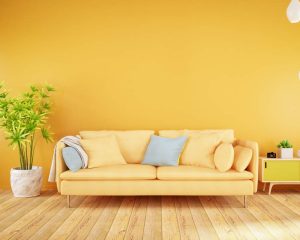
- Martindale rubs or rub count – This is a measure of durability. It indicates how many times a fabric can be rubbed before it starts to show signs of wear and tear. For high use furniture you should look for anything from 15,000 upwards. For headboards, ottomans or the back parts of seating, anything between 9,000 to 11,000 should suffice.
- The three W’s; Warp, Weft & Weave – Warp refers to the threads that run vertically in a loom, while weft refers to the threads that run horizontally. The weave refers to the pattern in which these threads interlace. There is no real rule of thumb when it comes to the quantity of threads as each yarn has different properties. But if you are looking for a durable upholstery fabric, usually tighter weaves will last you longer.
- Washing Instructions – This may not be difficult for you to read on a spec sheet, but nonetheless, its one of the most important details to consider when making a purchase. Some fabrics are more stain resistant than others, some clean well with warm soapy water, but others may need special cleaning solvents or dry cleaning. Keep in mind what will be easiest for you in this regard.
- Additional treatments – Some upholstery fabrics have additional treatments for stain, water and fire resistance. You should always take note of this, as it will help you determine in which space these fabrics will work best for you.
The Five Most Common Upholstery Fabric Choices
Cotton
Available in different grades, 100% cotton is natural and environmentally sustainable. With the right weave it can be quite durable and won’t pill like some other fabrics. It’s also easy to clean, breathable in warm climates and fade resistant even if placed in a sunny area. This material is great for casual decor and informal spaces in your home. Although it’s soft and easy to maintain, it’s not very stain resistant and tends to absorb smell easily. Thinner cottons are prone to wrinkling which can give it an untidy look. If you’re looking for a durable cotton, you should consider our Cotton Canvas collection which is perfect for indoor and outdoor use.
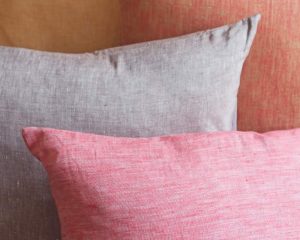
Boucle
This is probably one of the most popular decor choices in South Africa right now. Made with specially woven or knotted yarn, boucle can be made from wool, mohair, polyester, cotton or silk. It’s a cozy, warm fabric but still offers up a glamorous look that can fit into any decor style. Although this fabric is a wonderful addition to your home, it’s not very practical since it pills easily and has a tendency to get hooked on your clothes. This can often lead to your furniture looking old and worn soon after purchase. The best way to incorporate this upholstery fabric into your home is at the back of chairs, on cushion covers or on a statement piece.
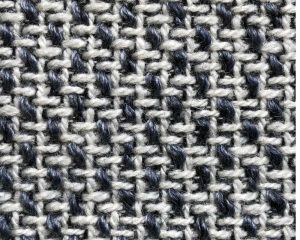
Velvet
One of the most popular choices for home decor, velvet is soft, luxurious and extremely comfortable. It’s a fabric that can suite any decor style including modern, casual, luxe and even classy antique. Velvet also comes with some texture varieties and in different price points. You can pair it with other upholstery fabrics or leave it on its own to elevate any room in your home. But it also has its downsides. It can be very difficult to clean and is prone to collecting dust easily. Due to the way its fibers are woven, it can also be less durable and wear out faster than other fabrics. You should also keep in mind that velvet does not fair well in direct sun.
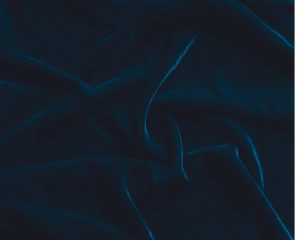
Linen
Like cotton, linen is a natural material that is hypoallergenic and anti-bacterial. It’s one of the most durable upholstery fabrics you can choose and it has the advantages of washing well and is also dry cleanable. It offers a soft, comfortable feel and remains cool even in the hottest climates. That being said, linen becomes brittle if placed anywhere where there is direct or nearby sunlight. It is also not stain resistant at all so if you have pets, kids or plan to use it in an every day setting, linen may not be the best option for you.
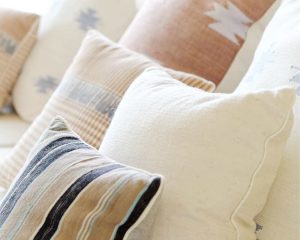
Chenille
Another very popular choice, and probably the one you see most in furniture and upholstery supply stores in Chenille. It’s a warm and cozy fabric that holds its shape and is often more durable than other fabrics. Its specific weave allows it to hold warmth making it a great choice for slightly cooler areas. On the downside, Chenille soaks up moisture easily so take care when using this fabric in humid places, it may not last you as long as you’d like. This also means that stains are much harder to get out of this fabric, so be wary of using a light colour.
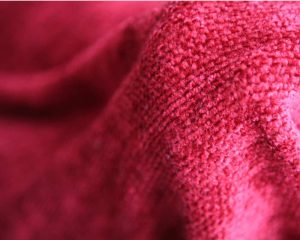
Leather
Yes, leather is not a fabric per se, but it’s such a popular choice for upholstery we thought it was worth adding to this list. Leather can be paired with almost all of the above upholstery fabric options and its can be easily cleaned and will last you a long time if you take care of it. But it can get a little high maintence, especially if its an everyday item. If you want to know more about upholstery leather you can check out this blog post that breaks it all down for you.
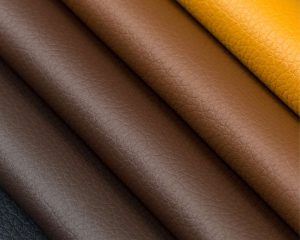
Other Decor Tips to Consider When Choosing your Upholstery Fabric
While fabric makes up a large part of choosing your furniture, there are a few decor tips that can help you narrow it down a but more.
- Don’t be afraid to pair multiple fabrics in one space. For example you can pair linen with leather to create a cool feel but still add durability to your daily use furniture.
- When choosing your fabrics, take into consideration the colours you plan to use. If you plan to use lighter colours, ensure that you are choosing a fabric that is easy to clean or has a stain resistant treatment.
- For daily use items, you should stay away from embroidered or embossed materials on the seating area and rather incorporate them on the sides, on throw pillows or statement pieces.
- Consider who will be using the furniture before choosing your fabric. Some fabrics pill or stain easily making them a bad choice if you have pets and small children.
- Take note of how much direct sunlight your furniture will be getting to ensure that you choose fabric that will last. If it is a direct sunlit area, maybe consider using stronger, UV protected upholstery fabric.
If you’re still unsure about what you should be purchasing, you can always reach out to your local upholstery supply store where you can get advice on what upholstery fabric to choose for your home.
- Published in Blogs
Choosing Upholstery Leather: Real vs Synthetic
Buying new furniture is no joke these days. It can be very expensive, especially if you are looking for quality. Many people opt to re-upholster pieces they already own or find second-hand. It may cost you less to add quality products to your existing furniture. But it also comes with its own challenges, especially if you decide to use upholstery leather: real or synthetic.
Being in the upholstery business teaches you a few things. And trust me, even a long-time business owner has to learn the hard way at times. The good news is that bad experiences help you learn. And in turn, it guarantees that we can give our customers the best advice.
So here is what you should know about choosing upholstery leather
First off, synthetic upholstery leather can be just as durable as genuine leather. While there are some dubious products on the market, if you know what to look for, you could easily find great quality.
And well, if you are vegan or environmentally conscious, then synthetic leather will probably be more appealing to you. But that’s a subject for another article.
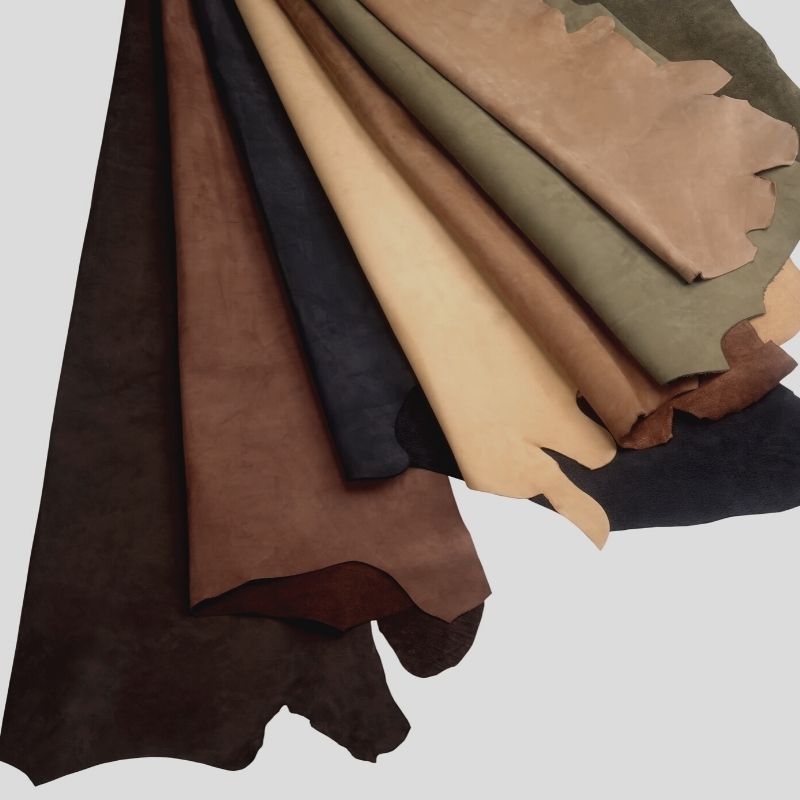
Genuine Upholstery Leather
All genuine upholstery leather comes in sheets of varying sizes and is usually bovine (cow). It will never come in linear meters on a neat roll. I repeat NEVER! I see a lot of customers come into the store expecting genuine leather to look like any other material or fabric. They are often surprised by what they find.
These sheets come straight off the animal and are called hides. They have a very distinct shape, and each sheet differs in size.
This is what you should look for:
- The texture of leather is unmistakable. The bottom should look like the picture below.
- Since it is a natural product, there will always be some blemishes and holes.
- If you push your finger into the leather you’ll notice that it is pliable and will wrinkle, similar to skin.
- Leather has a very distinct smell. This should also be an indicator of whether your leather is real or not.
- Hides can be dyed any colour and are treated to have different embossing and textures.
- We usually advise customers to buy softer leather for their furniture. It is more comfortable to sit on, and in some cases, is also easier to stitch.

How do I know what Synthetic Upholstery Leather to buy?
Like I mentioned before, not all synthetic leather is a no-go. Some are made to be as durable as leather and will last you a very long time with minimal care. And these options can also be easier on a tight budget as they are usually slightly cheaper.
Bonded Leather or PU: Many upholsterers and upholstery shops will try to sell you this, and it will fit into a budget neatly. I usually never recommend this to customers. Although there are exceptions to the rule, 80% of the time bonded leather and PU will start peeling in the first year or two.

Nepal Hide: It is possible to find good quality Nepal Hide that will last you a few years. This synthetic upholstery leather will also give you a more natural leather look. But, make sure to test it before you purchase. Try to tear a small piece or scratch the top of the material to see if it will rip easily. If it moves and is resistant to your tugging and scratching, it is likely to last.
Vinyl: From personal experience, we have found that Vinyl (also known as Rexine) comes out at the top when it comes to synthetic leather. But as with most materials, these come in various qualities as well.
4 Tips for Choosing Vinyl
- Check the thickness of the Vinyl. You should ideally look for a vinyl that is 0.8mm thick or more. Anything thinner is likely to tear very easily compromising its durability.
- Stretch, scratch and pull a sample of the vinyl. Usually, when we purchase vinyl we test it to see how easy it will rip or tear. With good quality vinyl, you’ll find that it has a stretch only on one side and won’t easily rip.
- Price is not always an indicator of quality. But in most large textile shops, you will find vinyl that ranges in prices according to its quality. The higher the price, the higher the quality.
- Make sure to ask if the vinyl has any additional treatments like UV and fungal protection. It’s always a bonus and means that your vinyl can be used outdoors and in vehicles too.
Lastly, consider how often you will be using the piece of furniture you are re-upholstering. If it’s a high-use item, you should always choose an upholstery leather that is durable and will stand the test of time.
- Published in Blogs
How to Choose a Sewing Machine for Beginners
Choosing the best sewing machine for you can be intimidating. With all the elaborate model numbers, stitch differences and other sewing related jargon, I’m sure you’re having a hard time making a choice.
Throw in the massive price differences, and you end up with a big conundrum on your hands. Don’t worry, we at Sonpra Superstore understand and we’ve created a nifty guide to help you out.
So here are the basics:
What is a Domestic Sewing Machine?
Domestic Sewing Machines are smaller machines made for home use. They are super versatile and can either be electric or hand operated. Depending on the type of machine you purchase, you can sew anything from simple hems to extravagant evening wear. Most domestic machines come with multiple stitch options which you will find in the description of the item. They are also really easy to carry around and pack away. These days there are plenty of options for beginners and masters alike.

You can check out our Singer CH15 which is hand operated but can also be easily converted into an electric machine. It’s a great budget buy that is durable and perfect if you’re looking for something simple to use.
You can also check out the Singer 8280 if you’re looking for a great electrical sewing machine that won’t break the bank.
What is an Industrial Sewing Machine?
Industrial Sewing Machines are more durable machines that are also larger and usually come with a table and a power saving motor. It’s the perfect type of sewing machine for heavy-duty projects and manufacturing. Each model offers you different capabilities from basic garment mending and stitching curtains, to sewing heavy duty materials for upholstery and tent making.

Here are the most commonly purchased Industrial Sewing Machines on the market:
The Straight Stitch
This is probably the most basic and easiest to use on this list. It’s also one of the most popular machines that we at Sonpra Superstore sell. The simple stitch is great for tailoring garments and perfect for sewing all kinds of curtaining. Most seamstresses and tailors start out with this sewing machine as it is simple but still offers you the efficiency you need to make your sewing business successful.
The Zig Zag
This sewing machine offers you more stitch options and can stitch slightly thicker materials than the straight stitch machine. This machine comes at a slightly higher price point and is also more difficult to use if you have had no previous training on an industrial sewing machine. That said though, if you are planning on taking on projects that require a more versatile machine, this is the one to invest in.
The Walking Foot
One of our most sold machines, the walking foot can stitch everything from Ripstop and PVC to Vinyl and Leather. It’s the obvious option if you plan on starting an upholstery or tenting business. This sewing machine is built to be more durable than the others on this list and is great for heavy fabrics.

The Overlocker
An Overocker is used to create an edging that will protect and create a neat finish on any fabric. The Industrial Overlocker is great for light and medium weight materials used for garments and curtaining. It can even be used on denim. The most popular type is a known as a four head as it stitches four threads together. It’s a great sewing machine to add on to your dressmaking or tailoring business.
We’ve kept it as simple to help you understand the basics of the sewing machines that might suit your needs. If you’re still unsure, visit your local sewing shop or contact us and we’ll help you out with the rest.
Happy Sewing!
- Published in Blogs


